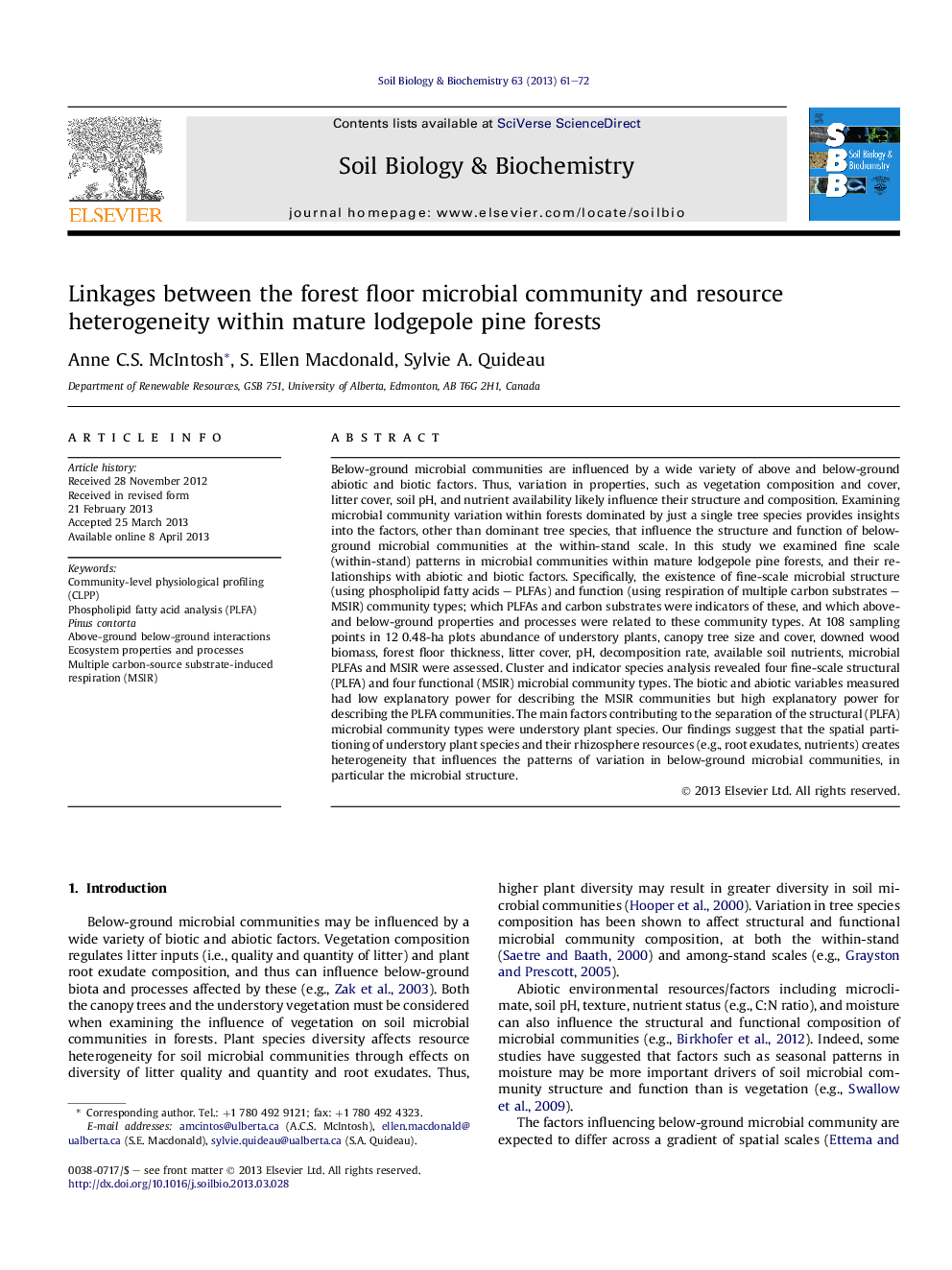| کد مقاله | کد نشریه | سال انتشار | مقاله انگلیسی | نسخه تمام متن |
|---|---|---|---|---|
| 2024807 | 1542621 | 2013 | 12 صفحه PDF | دانلود رایگان |
عنوان انگلیسی مقاله ISI
Linkages between the forest floor microbial community and resource heterogeneity within mature lodgepole pine forests
دانلود مقاله + سفارش ترجمه
دانلود مقاله ISI انگلیسی
رایگان برای ایرانیان
کلمات کلیدی
موضوعات مرتبط
علوم زیستی و بیوفناوری
علوم کشاورزی و بیولوژیک
دانش خاک شناسی
پیش نمایش صفحه اول مقاله

چکیده انگلیسی
Below-ground microbial communities are influenced by a wide variety of above and below-ground abiotic and biotic factors. Thus, variation in properties, such as vegetation composition and cover, litter cover, soil pH, and nutrient availability likely influence their structure and composition. Examining microbial community variation within forests dominated by just a single tree species provides insights into the factors, other than dominant tree species, that influence the structure and function of below-ground microbial communities at the within-stand scale. In this study we examined fine scale (within-stand) patterns in microbial communities within mature lodgepole pine forests, and their relationships with abiotic and biotic factors. Specifically, the existence of fine-scale microbial structure (using phospholipid fatty acids - PLFAs) and function (using respiration of multiple carbon substrates - MSIR) community types; which PLFAs and carbon substrates were indicators of these, and which above- and below-ground properties and processes were related to these community types. At 108 sampling points in 12 0.48-ha plots abundance of understory plants, canopy tree size and cover, downed wood biomass, forest floor thickness, litter cover, pH, decomposition rate, available soil nutrients, microbial PLFAs and MSIR were assessed. Cluster and indicator species analysis revealed four fine-scale structural (PLFA) and four functional (MSIR) microbial community types. The biotic and abiotic variables measured had low explanatory power for describing the MSIR communities but high explanatory power for describing the PLFA communities. The main factors contributing to the separation of the structural (PLFA) microbial community types were understory plant species. Our findings suggest that the spatial partitioning of understory plant species and their rhizosphere resources (e.g., root exudates, nutrients) creates heterogeneity that influences the patterns of variation in below-ground microbial communities, in particular the microbial structure.
ناشر
Database: Elsevier - ScienceDirect (ساینس دایرکت)
Journal: Soil Biology and Biochemistry - Volume 63, August 2013, Pages 61-72
Journal: Soil Biology and Biochemistry - Volume 63, August 2013, Pages 61-72
نویسندگان
Anne C.S. McIntosh, S. Ellen Macdonald, Sylvie A. Quideau,